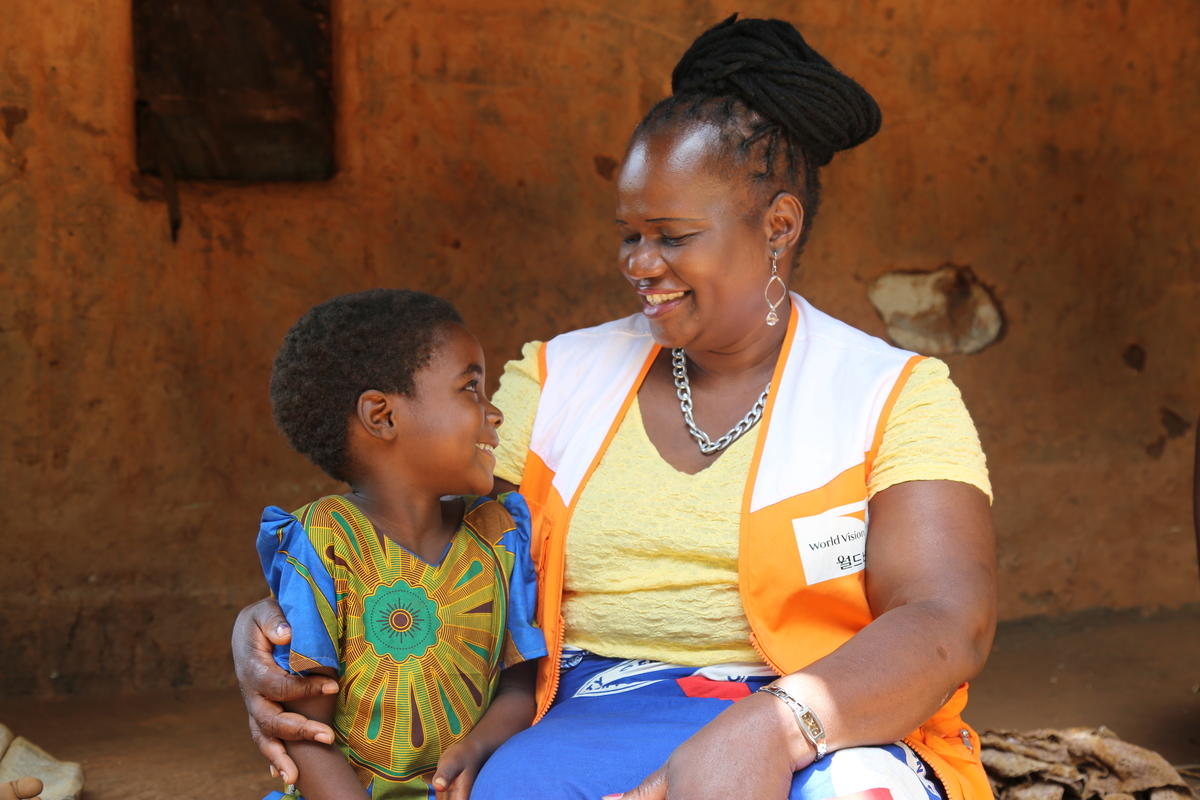
Is my sponsored child real?
Listen to our experts on what really happens on the ground.
It might be a question you’d never ask out loud, but if you’ve secretly wondered if your sponsored child was real, you wouldn’t be the first person.
The simple answer is – yes! The child in the photo on your fridge is real. So are the letters they send and the progress they’ve achieved, which is summarised in the annual reports you receive.
So – how does it really work then? How does a child in need become that photo on your fridge? We asked World Vision’s senior global advisor on registered children in our programmes, Brett Piece, how it happens. Here’s what he told us:
How do we identify vulnerable communities?
“At World Vision, we have child sponsorship in more than 50 countries. In each place, staff conduct a thorough analysis across the country using a number of key indicators to identify the most vulnerable areas and communities. Based on this analysis, each office develops a strategy for reaching the most vulnerable children in the country.
“We then begin conversations with high priority communities most suited to child sponsorship. A team goes to a community to analyse issues more deeply and meet with key stakeholders to understand the local context and concerns about the well-being of children. Usually, we find communities are very responsive and ready for change!
“After this assessment, World Vision and the communities together are ready to begin a journey of transformation for children.”

How do we identify children for sponsorship?
“We also start by bringing people together – community leaders, governments, organisations, and residents, including children. We explore the dreams and aspirations of children, families and community members, and all the barriers and complex issues that hold children back. This is really important, because when we work really closely with everyone in a community, we reach a shared understanding about what the challenges are and what needs to change.
“We identify the most vulnerable children through this process, as we develop plans to address the community’s root causes of vulnerability and poverty. This might include education, nutrition, livelihood, health or child protection mechanisms that will be put in place to change this community forever.”

How do we know each child’s name and story?
“We make sure every family selected for child sponsorship is involved in a process of learning and discussion about how the programme can help them and their children. Some families initially expect us to give handouts, but then learn that, instead, we want to empower their children and them as parents to be able to care for their own children more effectively. That’s far more powerful and what leads to lasting, transformational change. We then have another meeting together with each family to answer questions and ensure they fully understand the approach. This is an important part of a process of dignity and informed consent by the child and their family.
“In this process, parents share their child’s story and key information, while we also capture those magic photos and videos to introduce the child to a sponsor. At this point, we also help children themselves to understand what sponsorship is and ask for their own consent to join the programme in a way that is age-appropriate and fun. Their parents need to agree, but the kids do too.”

How do we track their progress and help them?
“The well-being of children registered in our programmes is assessed in many ways, but the most important is that each child has a person who monitors them and their situation regularly – usually a trained local volunteer who lives within the child’s community – which has been extremely important during COVID-19. The child and volunteer know each other. I’ve seen neighbourhood children running with smiles when ‘their’ World Vision volunteer visits. This is usually the person who helps them participate in our interventions and activities, or who helps them write letters or capture photos or videos for their sponsor.
“During these visits, we check key indicators around things like education and health – if a child is young, it might mean checking their nutrition card or making sure they have a birth certificate because that is essential for accessing services and having more rights. But most of all, it is the volunteer’s job is to connect with the child, talk to them, listen to them, understand their needs and affirm them.
“It can make a significant difference to a child’s psychosocial well-being, school attendance and many other things. During these challenging COVID-19 times, the care, support and protection of our volunteers and staff to children has never been so important. For children, our research shows it is not just our staff or volunteers who have an impact, but also the child sponsor. One parent laughed and told me, ‘She started working harder at school to please the sponsor. You would think she would do this for me. She really cares about her sponsor.’”

Every child in our sponsorship programme has a name and a story that’s unique to them. They’ve been identified as a vulnerable child in a vulnerable community and are being empowered to break free from poverty for good, by a sponsor like you. It’s an exciting journey!
Want to know more about your sponsored child? Send them a letter and ask. If you send a letter, they will reply.
